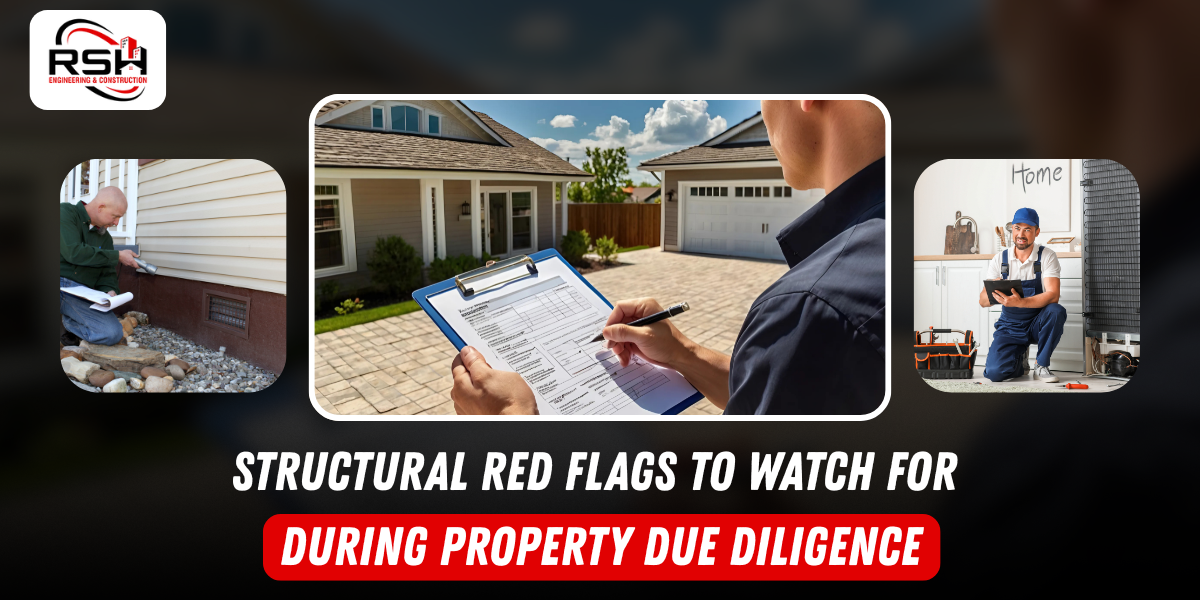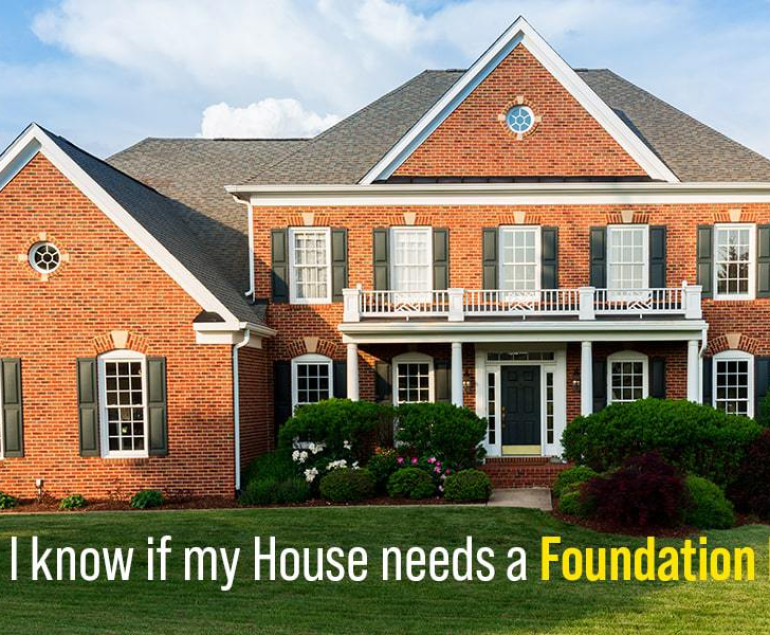Before sealing the deal on any real estate purchase, identifying structural red flags is vital. These warning signs could point to deep-rooted issues that cost more than expected. During property due diligence, a little awareness can save a lot of money.
Why Spotting Structural Red Flags Early is a Game Changer?
When you are doing property due diligence, don’t just look at location and design, focus on structure. Cracks, misaligned doors, uneven floors. These aren’t just cosmetic. They often point to bigger problems such as signs of foundation problems or hidden water damage. Buyers who ignore structural red flags often face expensive repairs later.
What Exactly Are Structural Red Flags?
Think of structural red flags as the body’s warning signs for a building. They are the first hands that sense something beneath the surface isn’t right. Common red flags include deep wall cracks, sloped floors, swelling foundations, and doors that stick or fail to open and close properly.
The Power of a Home Inspection Checklist
A suitable home inspection checklist gives direction to your inspection process. It notes that nothing gets overlooked—roof, walls, foundation, plumbing, and more. Professional engineers and inspectors use it to dig deeper, often demonstrating signs of foundation problems that may not be visible on the surface.
Foundation Cracks and Settlement Clues
Any good foundation inspection company knows foundation issues are among the costliest to fix. Tiny cracks can grow into serious threats if ignored. A reliable home inspection report often highlights settlement indicators that homeowners may never notice, like minor tilts in window frames or floor gaps.
Choosing a Foundation Inspection Company that Knows Its Job
Hiring a qualified foundation inspection company can be the difference between buying a safe investment or a money pit. These companies understand regional soil behavior, the age of materials, and common structural red flags tied to those conditions.
Why Are Professional Engineers a Must?
You wouldn’t trust your health to an amateur, your property deserves the same care. A professional engineer doesn’t just observe, they calculate loads, study soil behavior, and validate if a home can ensure environmental stress. Their insight adds a strong layer to residential and commercial inspection services.
Property Due Diligence is More Than a Paper Trail
Most people treat property due diligence as a paperwork process. But it’s much more. It involves verifying permits, getting a thorough home inspection checklist, and working with specialists who spot signs of foundation damage that most realtors might miss.
The Role of Structural Inspections in Risk Reduction
Structural inspections go beyond everyday inspections. They assess load-bearing walls, beam strength, concrete integrity, and roof trusses. These elements are your property’s skeleton. When these are compromised, the entire investment is at risk.
What Homebuyers and Investors Often Miss?
One of the most overlooked aspects in residential and commercial inspection is underground or hidden defects, old plumbing, faulty rebar, moisture intrusion, or insect damage. With a smart home inspection checklist, these areas won’t get skipped. If they do, you are walking blind.
Adjusting Inspections to the Property Type
If you are buying a suburban home or investing in a strip mall, both need solid home inspection reports. A residential buyer might focus on attic leaks, while a commercial investor needs to review weight-bearing loads and entry points. The foundation remains a common concern across both.
Signs of Foundation Problems You Can’t Ignore
Watch for diagonal cracks on walls, floor separation, or sagging ceilings. These are definitive signs of foundation problems. Left unhindered, they can compromise structural security, affect resale value, and impact insurance eligibility.
Bringing It All Together with Home Inspection Reports
A complete home inspection report ties every detail together—visual clues, measurements, photos, and expert comments. It’s your negotiating power and your post-purchase protection. It notes signs of foundation damage, don’t delay. Get adept guidance before moving forward.
Conclusion
When it comes to real estate, what you don’t see can hurt you. That’s why dotting structural red flags during property due diligence is non-negotiable. From pinpointing early signs of foundation problems to working with a trusted foundation inspection company, the proper inspection makes all the difference. Trust RSH Engineering & Construction, your partner in safe, innovative, and solid property investments.
Frequently Asked Questions on Structural Red Flags and Property Due Diligence
Q1: What’s the biggest structural red flag to watch out for in a property?
A1: Foundation cracks or floor slope are often the biggest red flags, hinting at deeper stability concerns that demand immediate attention.
Q2: Can a basic home inspection cover all structural issues?
A2: A basic inspection may reveal surface problems, but only a detailed structural inspection by a professional engineer can assess deep structural integrity.
Q3: Is due diligence the buyer’s responsibility or the seller’s?
A3: It’s primarily the buyer’s task to conduct property due diligence, although sellers benefit from pre-inspections to increase confidence and value.





